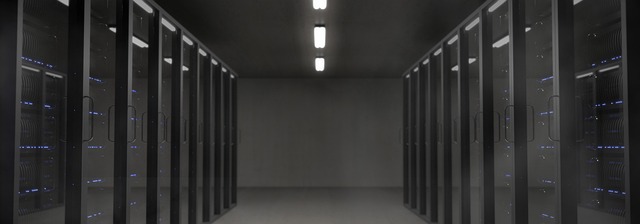Kari Lilja, TkT, Erikoistutkija; Sirpa Sandelin, TkT, Yliopettaja
English version: Click the link
Jo vuonna 2018 oltiin maailmalla huolissaan alati kasvavan videoiden kulutuksen tuottamista ympäristövaikutuksista. Vuonna 2019 brittiläinen tutkimusryhmä julkaisi oman tutkimuksensa aiheesta (Streaming, Multi-Screens and YouTube: The New (Unsustainable) Ways of Watching in the Home). Tutkimuksessa mm esitettiin arvio, että vuonna 2030 internetin ja online-palvelujen käytön osuus kaikesta sähkön kysynnästä ylittäisi viidenneksen (21 %) ja vuonna 2040 puolet kasvihuonepäästöistä johtuisi internetin käytöstä. Lisäksi videoiden striimauksen eli katselun arvioidaan muodostavan noin 50 % dataliikenteestä. Elävän kuvan osuus energian kulutuksesta on osapuilleen samaa luokkaa. Kun tutkimus julkaistiin vuonna 2019, tutkimusryhmän jäsen Mike Hazas on kertonut Ylelle yhden HD-tasoisen kahden tunnin Netflix-elokuvan katselun yhdellä laitteella vaativan energiaa yhteensä 1,13 kWh.
Kun videon käynnistää, tai kun menee kotisivulle, jossa on alati pyörivä videosilmukka, taustalla toimii ketju energiaa kuluttavia laitteita. Sähköllä toimivat niin palvelimet, reitittimet, vahvistimet, toistimet, palomuurit ja päätelaitteet, kuin varsinaiseen katseluunkin käytettävät laitteet. Syntyvien päästöjen määrä riippuu käytetystä teknologiasta, tiedonsiirron tyypistä ja nopeudesta ja siirretyn datan määrästä, minkä videon kohdalla määrää resoluutio. Valtaosa kulutuksesta ei aiheudu katsojan laitteista eikä näy sähkölaskussa, vaan sen käyttävät palvelimet, tiedonsiirtotekniikka tukiasemineen ja vahvistimineen, ja valtavat konesalit ilmastointi- ja jäähdytysjärjestelmineen.

Kulutettu energia täytyy tuottaa jollakin, ja huomattava osa energian tuotannosta tuottaa kasvihuonekaasupäästöjä. Päästöjen määrään vaikuttaa käytetyn tuotantoteknologian ohella se, missä konesalit sijaitsevat, ja mitä reittejä pitkin data kulkee, eli kuinka puhdasta sähköä videon välittäminen loppukäyttäjälle saa käyttöönsä. Intiassa tuotetun sähkön. vain yksi esimerkki mainitaksemme, päästömäärät olivat vuonna 2019 keskimäärin yli 4,5-kertaiset Suomessa tuotettuun verrattuna. Katsoja ja palvelun tarjoaja, oli se sitten kotisivun ylläpitäjä tai monikansallinen viihdejätti, eivät juurikaan pysty vaikuttamaan siihen, mitä reittejä pitkin ja minkälaista energiaa käyttäen data perille kulkee.
Videon tuottajan tai kuluttajan on vaikea arvioida videon siirrosta ja katselusta aiheutuvia kokonaispäästöjä.
Ongelmana ei suinkaan ole yksittäisen katsojan yhden elokuvan tai parin minuutin silmukan striimaus, vaan käyttäjien ja toistojen ääretön määrä. Vaikka tekniikka on kehittynyt vähemmän kuluttavaan suuntaan, esimerkiksi videoiden laatu ja sitä kautta datan määrä, laitteiden määrä ja erilaisten videosovellusten valikoima ovat kasvaneet ja kasvavat koko ajan, samoin siirtonopeudet. Eikä videoiden katselu ole ainoa tieto- ja viestintätekniikan käyttömuoto. ICT-alan aiheuttamien päästöjen määrän on arvioitu jo ylittäneen lentoliikenteen tuottamien päästöjen määrän.

Ilman tietotekniikkaa ei kuitenkaan enää voisi kuvitella modernia yhteiskuntaa. Siksi kaikkien on-line -palveluja tarjoavien ja kotisivuja tuottavien ja ylläpitävien tahojen olisi hyvä tuntea muutama kestävän tietojenkäsittelyn perusperiaate:
– Käytä liikkuvaa kuvaa vain silloin, kun se on asian esittämiseksi välttämätöntä.
-Vältä liikkuvan kuvan käyttöä sivulla, jonne käyttäjä ensimmäiseksi ohjautuu (aloitussivulla).
-Vältä nopeita ja voimakkaita valoisuuden ja värien vaihtelua (esimerkiksi ns strobe-efectit) jotka voivat laukaista katsojassa migreenin tai jopa epilepsiakohtauksen.
– Käytä selkeitä fontteja ja muista huolehtia tekstin ja taustan selkeästä erottumisesta myös värisokeille ja näkövammaisille.
-Vältä kuvitusta ja ilmaisuja, jotka voisivat loukata jotain kohderyhmääsi.
-Jos olet epävarma, kysy kokeneemmilta.
-Jos edellä olevilla asioilla ei mielestäsi ole tekemistä kestävän kehityksen ja vastuullisuuden kanssa, lue uudestaan YK:n kestävän kehityksen tavoitteet.
Pointteja voisi toki listata paljon lisääkin, mutta kun useimmilta tuntuvat unohtuvan jo nämä alkeellisimmatkin, aloitetaan niistä.

In English
Are home page video clips polluting?
It was already in 2018, when the world was worried about the environmental effects of the ever-increasing consumption of videos. In 2019, a British research group published its own study on the subject (Streaming, Multi-Screens and YouTube: The New (Unsustainable) Ways of Watching in the Home). In that study, for example, it was estimated that in 2030 the share of the use of the internet and online services in all electricity demand would exceed a fifth (21%) and in 2040 half of the greenhouse emissions would be due to the use of the internet. In addition, video streaming, i.e. viewing, is estimated to make up around 50% of data traffic. The live image’s share of energy consumption is in the same category as its components. When the study was published in 2019, Mike Hazas, a member of the research team, told Yle that watching a two-hour Netflix movie at HD level on one device required a total of 1.13 kWh of energy.
When you start a video, or when you go to a home page with an ever-rotating video loop, a chain of energy-consuming devices works in the background. Servers, routers, amplifiers, repeaters, firewalls, and terminal devices, as well as devices used for actual viewing, run on electricity. The quantity of emissions generated depends on the technology used, the type and speed of data transfer and the amount of transferred data, which is determined by the resolution of the video. Most of the consumption is not caused by the viewer’s devices and does not appear in the electricity bill, but is used by the servers, data transmission technology with base stations and amplifiers, and huge data centres with air conditioning and cooling systems.

Consumed energy must be produced with something, and a considerable part of energy production produces greenhouse gas emissions too. In addition to the production technology used, the quantity of emissions is affected by where the data centres are located and the routes along which the data travels, i.e. how much clean electricity is used to transmit the video to the end user. of electricity produced in India. to mention just one example, the emissions in 2019 were on average more than 4.5 times higher than those produced in Finland. The viewer and the service provider, whether it’s a website administrator or a multinational entertainment giant, have little to no influence on which routes and using what kind of energy the data travels to.
It is difficult for the video producer or consumer to estimate the total emissions resulting from the transmission and viewing of the video.
The problem is not the streaming of one movie or a loop of a couple of minutes by an individual viewer, but the infinite number of users and replays. Although technology has developed in a less consuming direction, for example the quality of videos and thus the amount of data, the number of devices and the selection of different video applications have grown and are growing all the time, as well as transfer speeds. And watching videos is not the only form of using information and communication technology. The quantity of emissions caused by the ICT industry has already been estimated to have exceeded the quantity of emissions produced by air traffic.

However, modern society could no longer be imagined without information technology. That’s why it would be good for all entities that provide online services and produce and maintain websites to know a few basic principles of sustainable data processing:
-Use a moving image only when it is necessary on point of view of the issue you want to highlight.
-Avoid using a video on the page where the user first navigates (on the start page).
-Avoid fast and strong changes in brightness and colours (for example so-called strobe effects) which can trigger a migraine or even an epileptic attack to the viewer.
-Use clear fonts and remember to make sure that the text and background are clearly distinguished, also for the colourblind and visually impaired.
-Avoid illustrations and expressions that could offend your target group.
-If you are unsure, ask the more experienced.
-If you think the above issues have nothing to do with sustainable development and responsibility, read the UN’s sustainable development goals again.
Of course, many more points could be listed, but since most people seem to forget even these most basic ones, let’s start with them.

Artikkeli on kirjoitettu Euroopan unionin rahoittaman Easy energy -hankkeen puitteissa. Vastuu artikkelissa esitetyistä näkemyksistä on yksinomaan kirjoittajilla.
This article was written in the framework of the project Easy Energy, funded by the European Union. The sole responsibility for the views expressed in this article lies with the authors.

